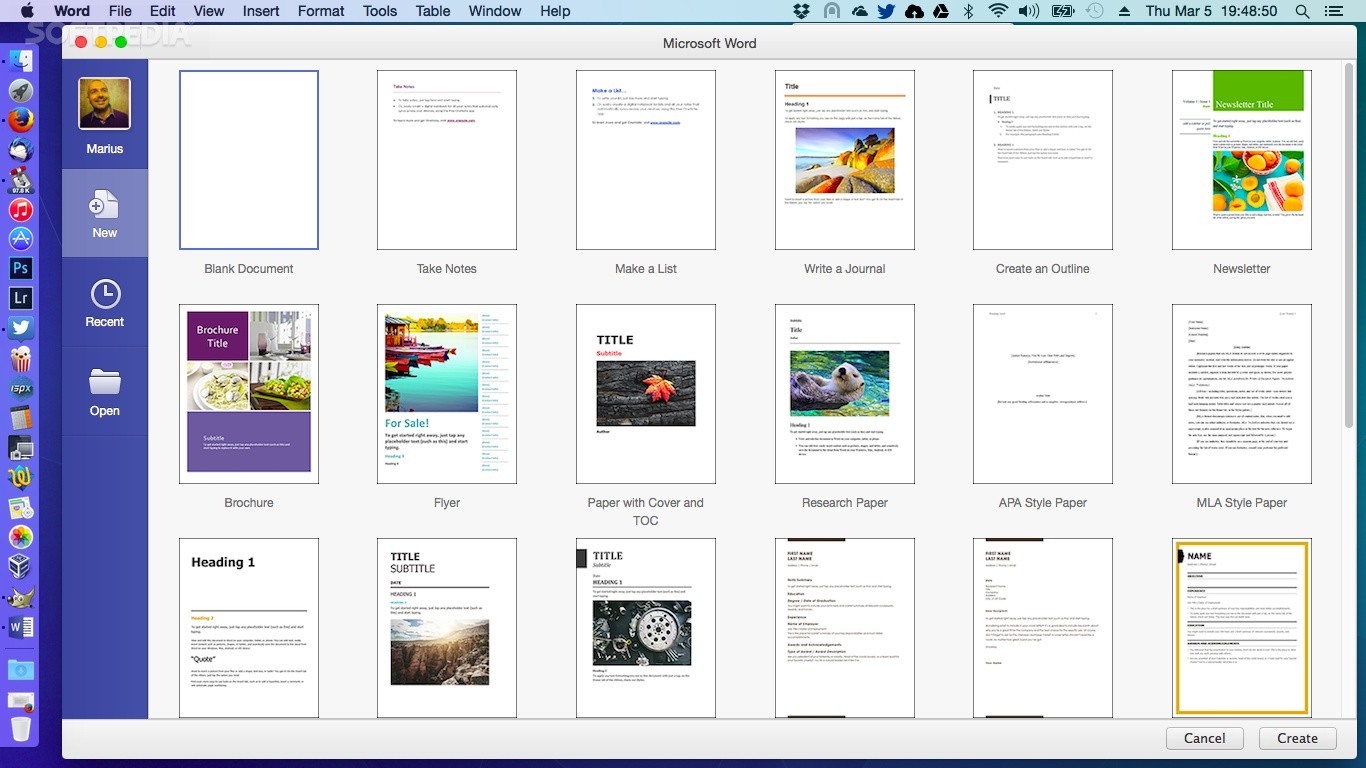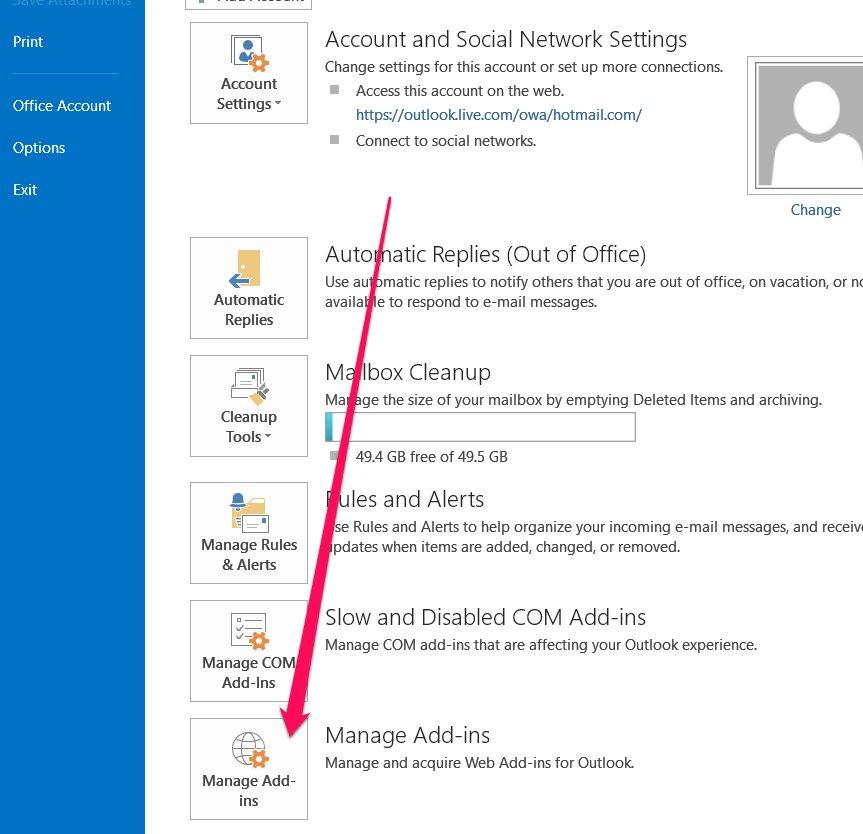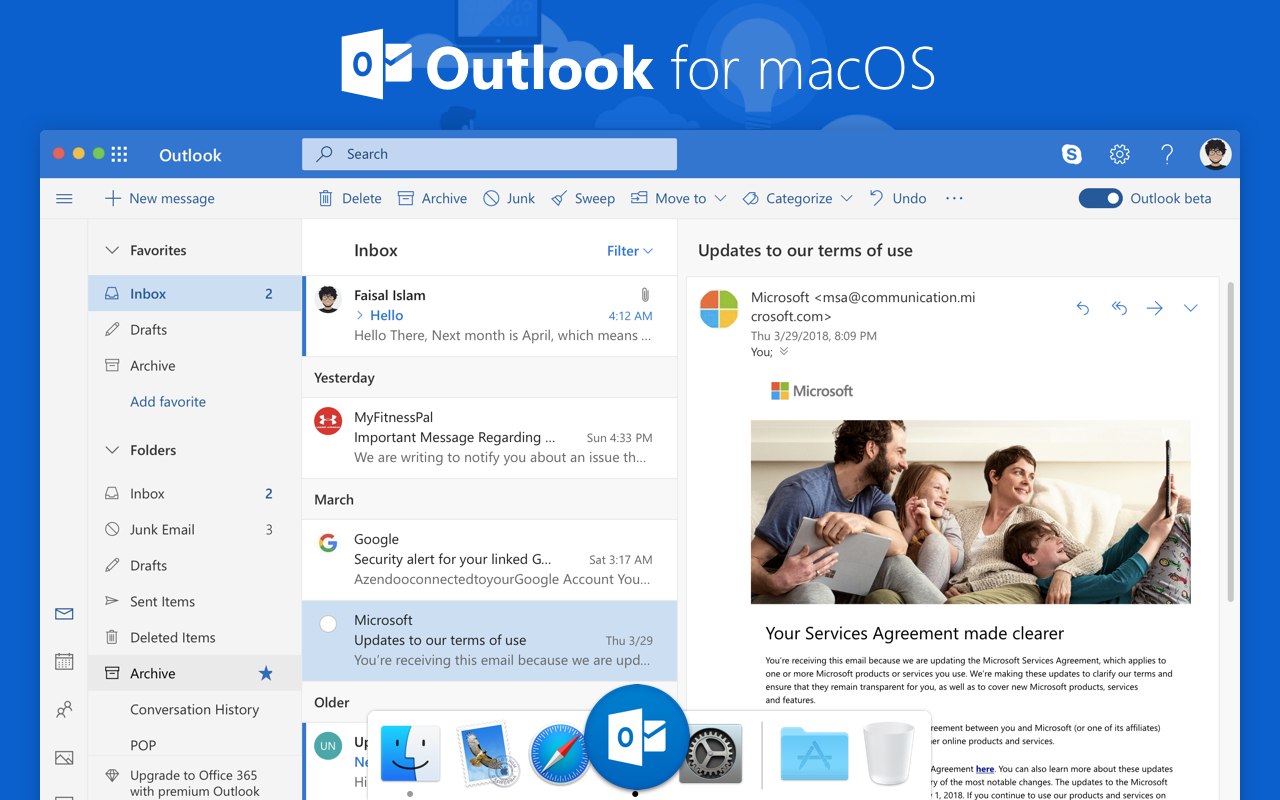Download Images Outlook 2016 Mac
- Download Images Outlook 2016 Mac Catalina
- Outlook 2016 Auto Download Images
- Outlook 2016 Download Pictures Setting
By default, Outlook 2016 for Mac doesn't automatically download pictures or photos in email messages if the images are stored on the Internet. However, you can turn off this preference or choose to download Internet pictures only from your saved contacts. Apr 16, 2018. Download pictures in email messages automatically. It might be a little boring to download pictures in received email massages manually every time. Here we arrange you with the method to download pictures for all received email messages automatically. Oct 03, 2017. Oct 19, 2011.
By default, Outlook will not automatically download images from emails that are received externally. Additionally, you will get a message in the header saying “Click here to download pictures. To help protect your privacy, Outlook prevented automatic download of some pictures in this message”.
Download Images Outlook 2016 Mac Catalina

Although you could click on the message and click “Download Pictures”, when you have to do it for every single email, it gets a bit tedious and old after a while.
How to Automatically Download Images for All Incoming Messages
In Outlook 2019, 2016, 2013 and 2010 simply go to File > Options > Trust Center > Trust Center Settings > Automatic Download and then uncheck “Don’t download pictures automatically in HTML e-mail messages or RSS items”.
If you’re using Outlook 2007, go to Tools > Trust Center > Automatic Download and then uncheck “Don’t download pictures automatically in HTML e-mail messages or RSS items”.
For Outlook 2003, go to Tools > Options > Security tab > Change Automatic Download Settings > and then uncheck “Don’t download pictures or other content automatically in HTML e-mail”, and also uncheck “Warn me before downloading content when editing, forwarding, or replying to email”.
When you uncheck this setting, all future emails that you receive will automatically download images. Before disabling this feature, you should probably keep reading to find out the risks involved and why this security feature is enabled by default.
How to Allow Automatic Image Downloads Only for Some Emails
If you trust the sender, you can allow all pictures and content to be automatically downloaded when you receive emails from them. You can either allow their whole domain (eg. company.com) or just their email address.

To do this, right click on the message header and click “Add Sender to Safe Senders List” or “Add the Domain @example.com to Safe Senders List”.
Why does this happen?
Outlook has a security feature which prevents images and also some HTML elements from being downloaded from external emails until you allow it.
Outlook 2016 Auto Download Images
Although this feature can be annoying, it actually exists for a very good reason.
Imagine that you receive an email from an unknown sender, and you open it. The images in the email are automatically downloaded from the sender’s server. If the sender is monitoring that server, they can easily find out that you opened that email by checking if you downloaded the images. This will instantly tell them that your email address is valid. This is one of the many tactics that spammers use to find out if an email address is valid.
Outlook 2016 Download Pictures Setting
This security feature stops spammers from snooping for email addresses – which is great. However, it’s not so great for email signatures as it doesn’t download the images automatically.
Advantages of Blocking Automatic Image Downloads in Emails
Most of the time when a large company such as Microsoft decide to implement a security feature, there’s usually a good reason behind it.
When you block automatic image downloads in Outlook:
- You’re making it harder for email spammers to get your email address.
- You’ll use less bandwidth downloading the emails because the images aren’t downloaded unless you allow it.
- Your mailbox storage will be smaller because you won’t be storing un-needed images. This reduces the overall email infrastructure costs for your company.
- You won’t be exposed to potentially insensitive or hurtful images.
Which versions of Outlook have this feature?
This security feature was first introduced in Outlook 2003 and has since been used in all subsequent versions.
Reading Time: 6minutesPre-Flight Check
- These instructions are intended specifically for setting up a new email account in Microsoft Outlook 2016 for Mac OS X 10.11.3.
- If you have not already created an email address on your server, visit our New User Tutorial: Creating E-Mail Addresses in cPanel.
- If you need to configure your email address in Outlook 2016 for Microsoft Windows, see How To Set Up Email in Outlook 2016. For other mail clients, check out our tutorial on setting up other email clients.
Step #1: Add or Edit the Email Account
- To set up a new email account or edit the settings on an existing one, click the Tools menu and then select Accounts to open the Accounts panel.
- The setup process is slightly different depending on whether you have any existing email accounts configured in Outlook 2016:
- Setting up your first email account: If this is your first time setting up Outlook 2016, you will need to click on the envelope icon next to the third option: Other Email (iCloud, Google, Yahoo!, or other accounts):
- Setting up an additional email account: Once any email account has been set up in Outlook 2016, additional accounts can be added by clicking the plus sign in the lower left corner and selecting Other Email… from the pull-down menu:
- Changing the settings for an existing email account: Click on the account’s name in the account list on the left to make changes to any existing account in Outlook 2016, and skip ahead to Step #4: Editing an Existing Email Account.Note: You cannot edit an existing email account to directly change its connection method. To change an account from POP to IMAP or vice versa, simply add a new account for the email address as described below and select the desired connection type. Outlook 2016 will allow you to have multiple accounts for the same email address, so an account for sample@example.com using IMAP can coexist with an account for sample@example.com using POP. To prevent data loss, do not delete the existing account before adding a new one.
Step #2: Configuring a New Email Account
On the account information panel, enter the information as follows:
- E-mail address: requires your complete email address, such as sample@example.com.
- Password: is the password associated with the email account.
- User Name: is your full email address. It should exactly match what you entered into the E-mail address field above.
- Type: you may select IMAP or POP. IMAP is recommended for its ability to sync messages between multiple devices (to learn more about the difference between the protocols, see IMAP vs POP3 email).
- Incoming server:
- When using standard (non-SSL) settings, use mail.yourdomainname.com
- When using secure (SSL) settings, use the server’s hostname (host.yourdomainname.com)
- The default port numbers should not need to be changed unless you have configured your server to use non-standard ports (not common)
- Check the box next to Use SSL to connect (recommended)
- Outgoing server:
- When using standard (non-SSL) settings, use mail.yourdomainname.com
- When using secure (SSL) settings, use the server’s hostname (host.yourdomainname.com)
- The default port numbers should not need to be changed unless you have configured your server to use non-standard ports (not common)
- Check the box next to Use SSL to connect (recommended)
Once you’ve entered all the requested information, click the Add Account button at the bottom of the window to create the account with your specified settings.
Step #3: Configure Security Settings
When you add your email account, an alert window may prompt you to review security settings. This is expected if you have not already purchased and installed a signed, third-party verified SSL certificate on your mail server. If you see no such prompt, then you’re all set and can begin using Outlook 2016 with your email account immediately.
If you do get a security prompt, which specifies that information that you view and send will be encrypted, note that Outlook 2016 will not be able to verify the security of the certificate through a third-party because you are the only authority validating it:
If you wish to proceed with the connection, you have two options:
- You can click the Continue button to proceed, with the caveat that you may need to accept the warning each time Outlook connects.
- Or, you can permanently store the certificate and treat it as trusted, by clicking Show Certificate and then checking the box next to Always trust … before clicking Continue. You will need to authenticate with your password to store the exception for your self-signed certificate.
Once connected, Outlook 2016 will download your mail from the server along with any custom directories you’ve added, which will be synced by default.
Step #4: Editing an Existing Email Account
To change the settings on an existing email account, click the Tools menu and then select Accounts to open the Accounts panel.
Click on the name of the account in the left pane, and make the desired changes:
- User Name: is your full email address. It should exactly match the value of the E-mail address field above.
- Password: is the password associated with the email account.
- Incoming server:
- When using standard (non-SSL) settings, use mail.yourdomainname.com
- When using secure (SSL) settings, use the server’s hostname (host.yourdomainname.com)
- The default port numbers should not need to be changed unless you have configured your server to use non-standard ports. If you do need to configure mail on a different port, you can check the box next to Override default port and enter the appropriate incoming mail server value (POP3 should be 110 for non-SSL connections and 995 when using SSL; IMAP should be 143 for non-SSL connections and 943 when using SSL.)
- Check the box next to Use SSL to connect (recommended) for a secure connection.
- Outgoing server:
- When using standard (non-SSL) settings, use mail.yourdomainname.com
- When using secure (SSL) settings, use the server’s hostname (host.yourdomainname.com)
- The default port numbers should not need to be changed unless you have configured your server to use non-standard ports. If you do need to configure mail on a different port, you can check the box next to Override default port and enter the appropriate outgoing mail server value (25 for non-SSL connections and 465 when using SSL; Unlike many other mail clients, Outlook 2016 does not require you to use port 587 on Mac OS X).
- Check the box next to Use SSL to connect (recommended) for a secure connection.
- The More Options… button will allow you to configure authentication for the outgoing (SMTP) mail server:
- Authentication: Typically, Use Incoming Server Info is sufficient, but if you receive connection errors due to SMTP authentication, you may need to select User Name and Password. Do not select None; you will not be able to send mail if None is selected as the authentication type.
- User Name: This field can only be filled in if you use the User Name and Password authentication type. If enabled, it must be the full email address.
- Password: This field can only be filled in if you use the User Name and Password authentication type. If enabled, use the email account’s password.

Bonus: Select IMAP Folders to Sync
By default, Outlook 2016 for Mac OS X will sync all IMAP folders. To specify which ones you want to sync, pull down under the Tools menu and select IMAP Folders… to bring up the Folder Browser.
In the Folder Browser, you will see a list of your accounts in the left pane.
- In the first pane, click on the IMAP account’s name
- In the second pane, click on INBOX (or the desired custom folder, if listed)
- In the third pane, click on the folder to which you want to subscribe or unsubscribe.
- Folders to which you already are subscribed will be displayed in bold type, while folders to which you are not currently subscribed will be displayed in a light-face font. Note that on some versions of Mac OS X, the distinction can be almost imperceptible.
- Clicking on the name of a folder to which you are subscribed will allow you to click the red ( – ) Unsubscribe button in the top-left menu, and clicking on the name of a folder to which you are not subscribed will allow you to click on the green ( + ) Subscribe button in the top-left menu.
- You can not unsubscribe to default account folders, such as Drafts, Junk, Sent, and Trash.